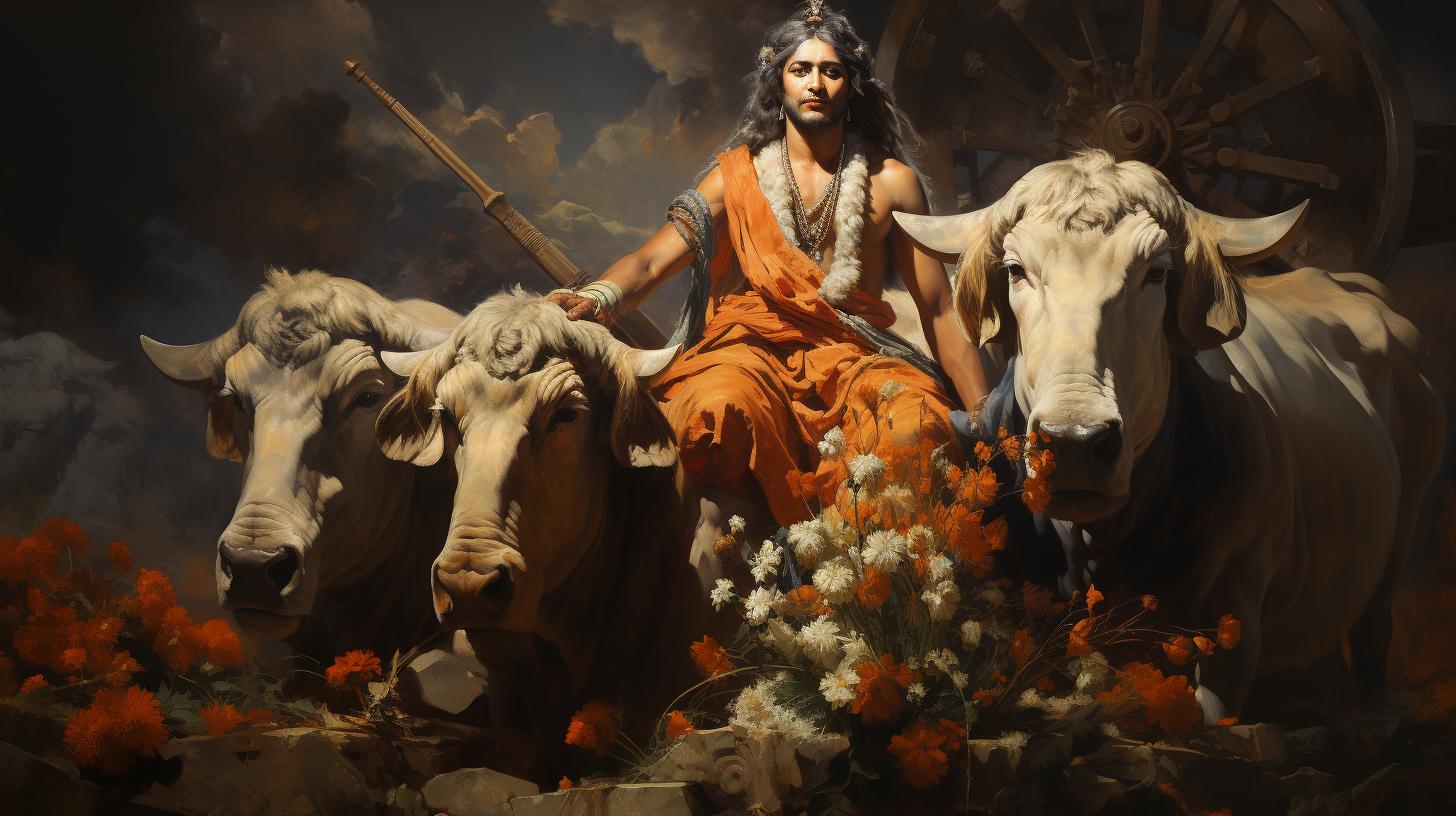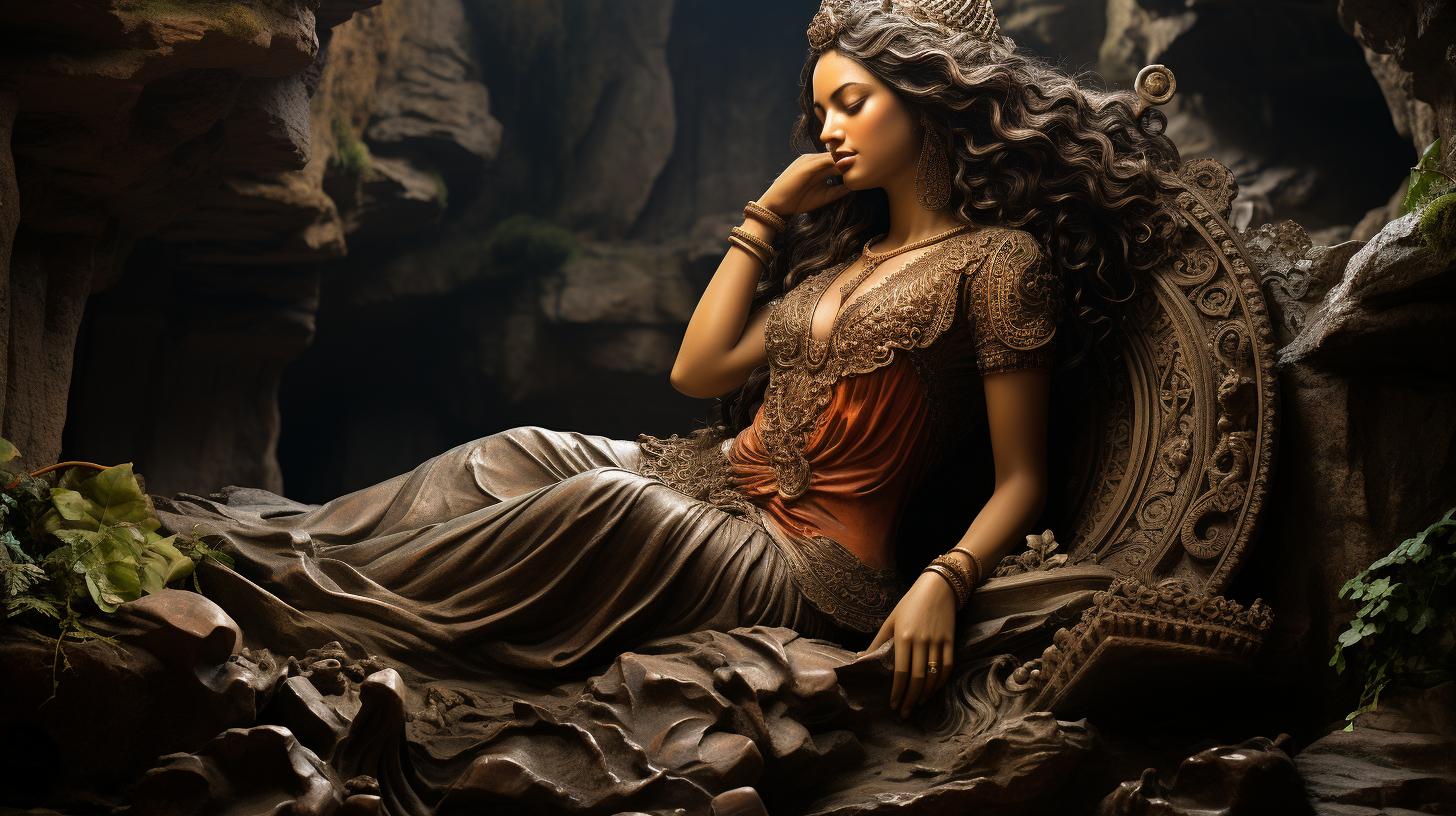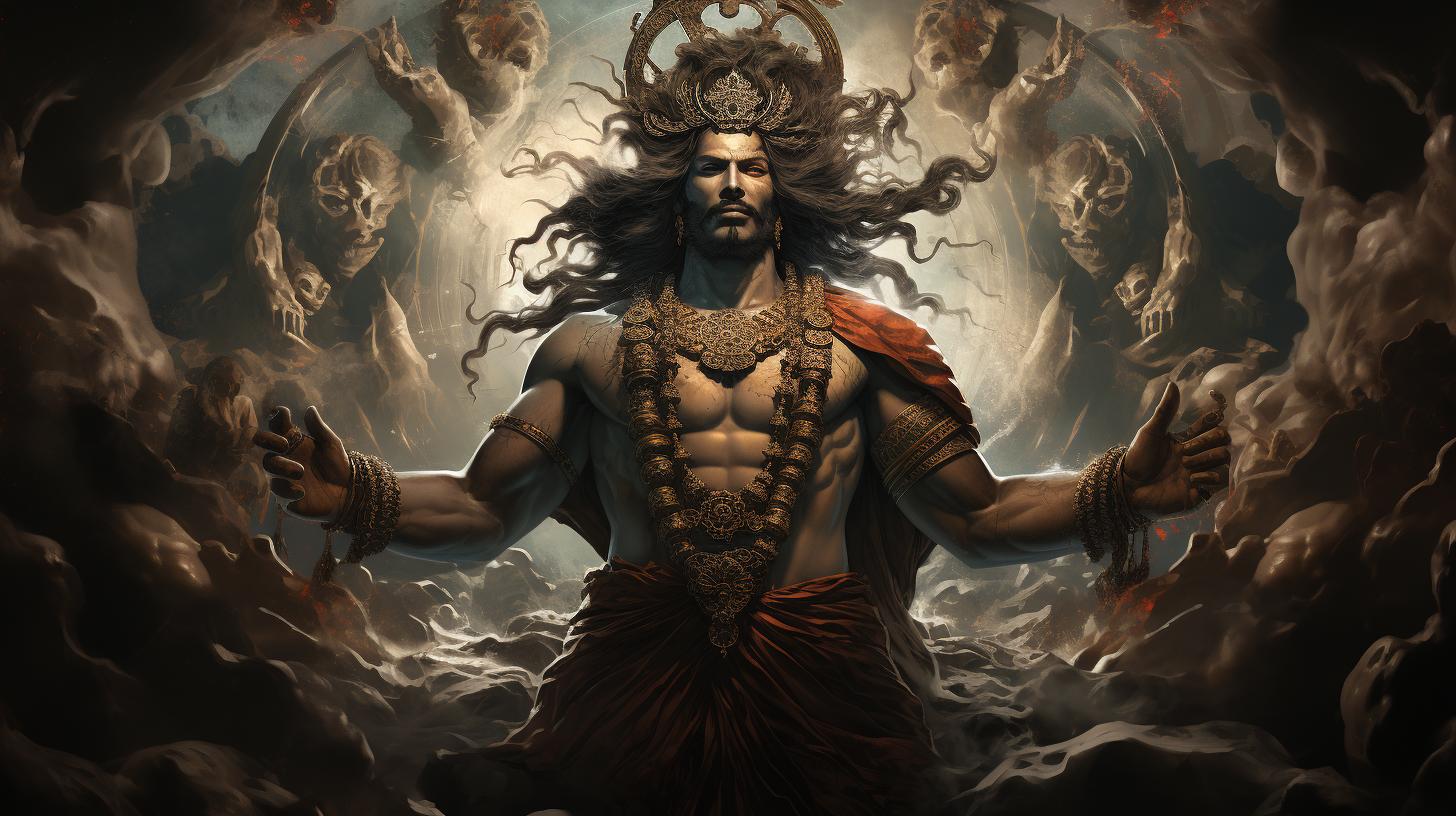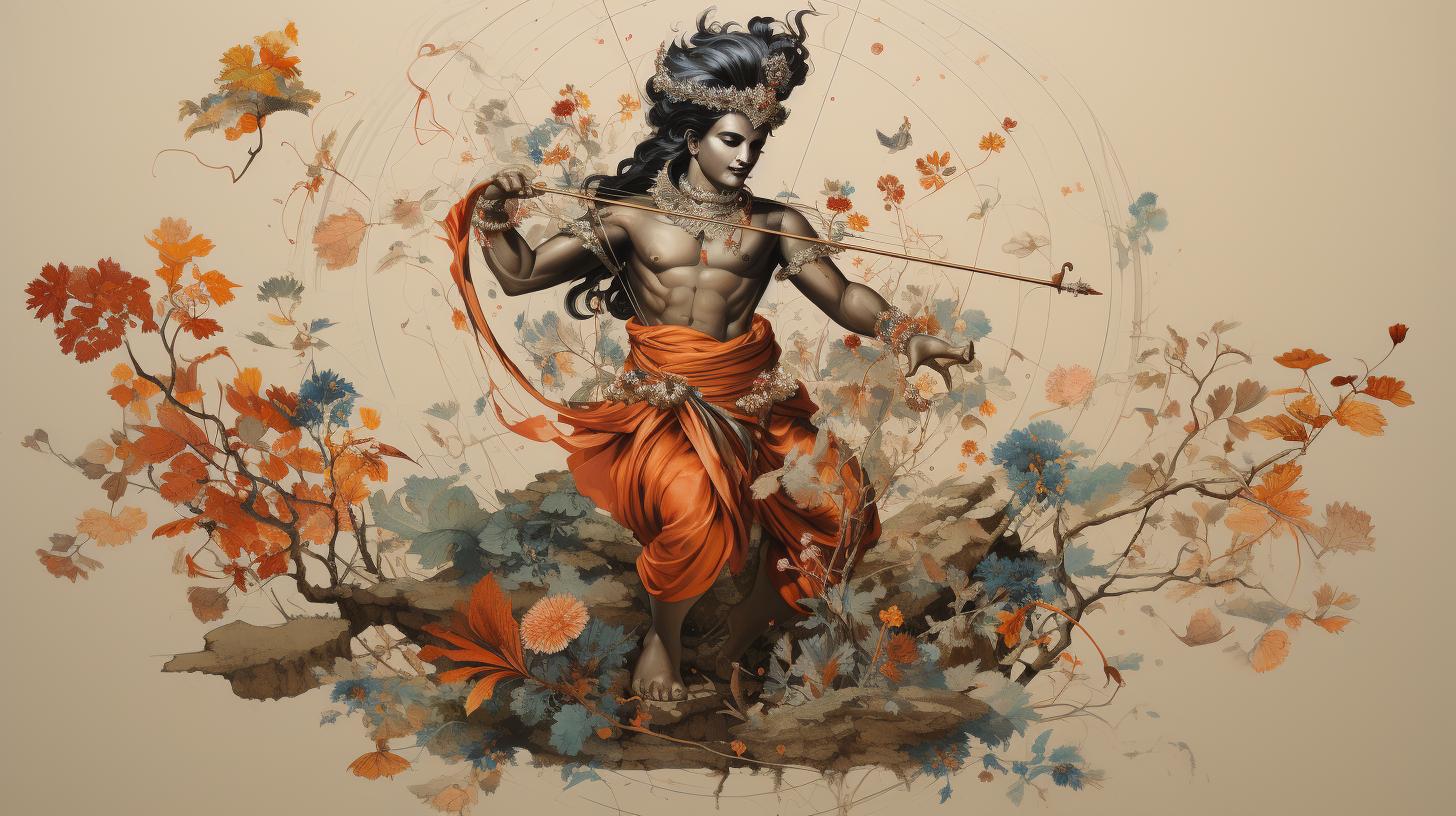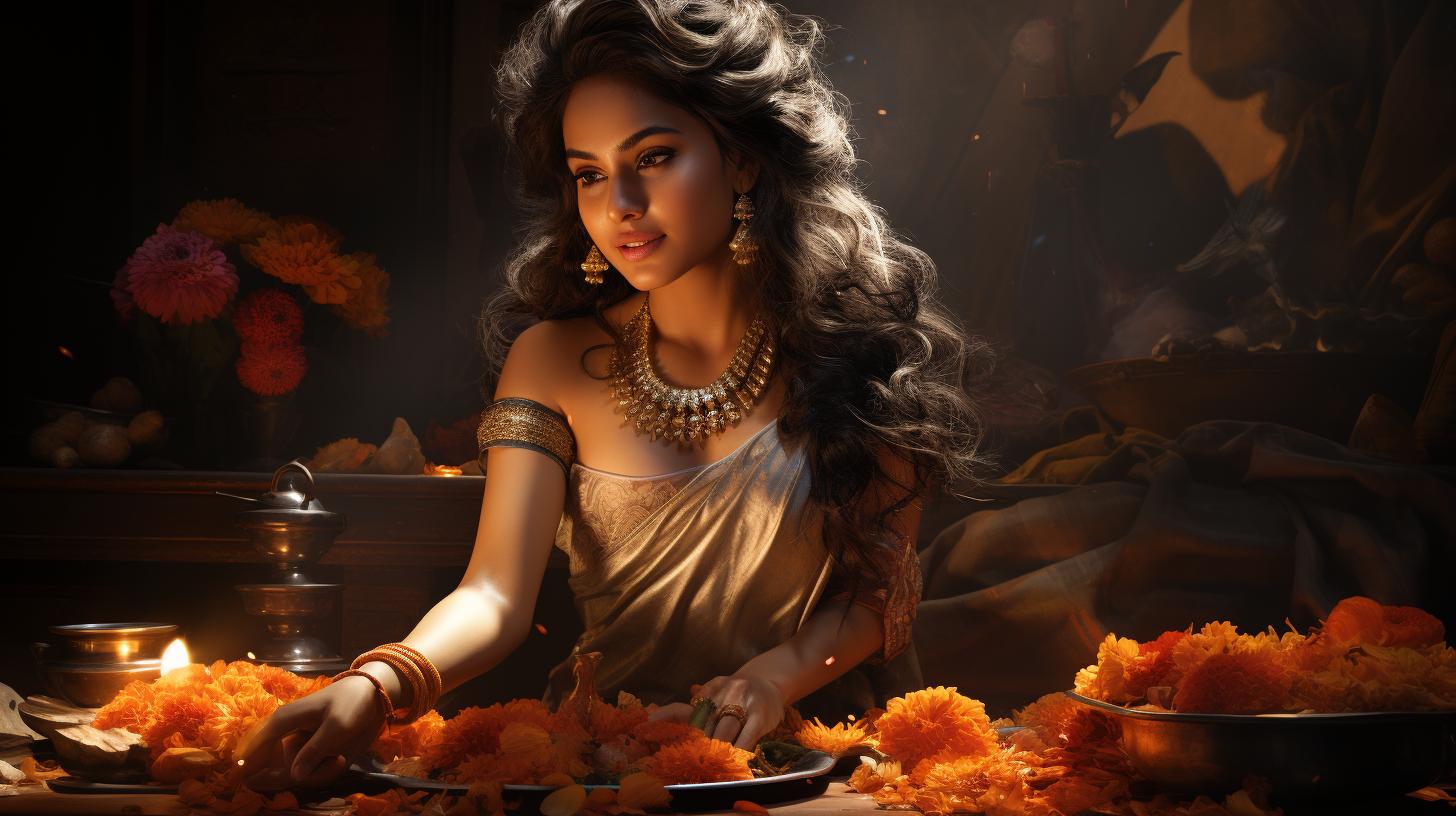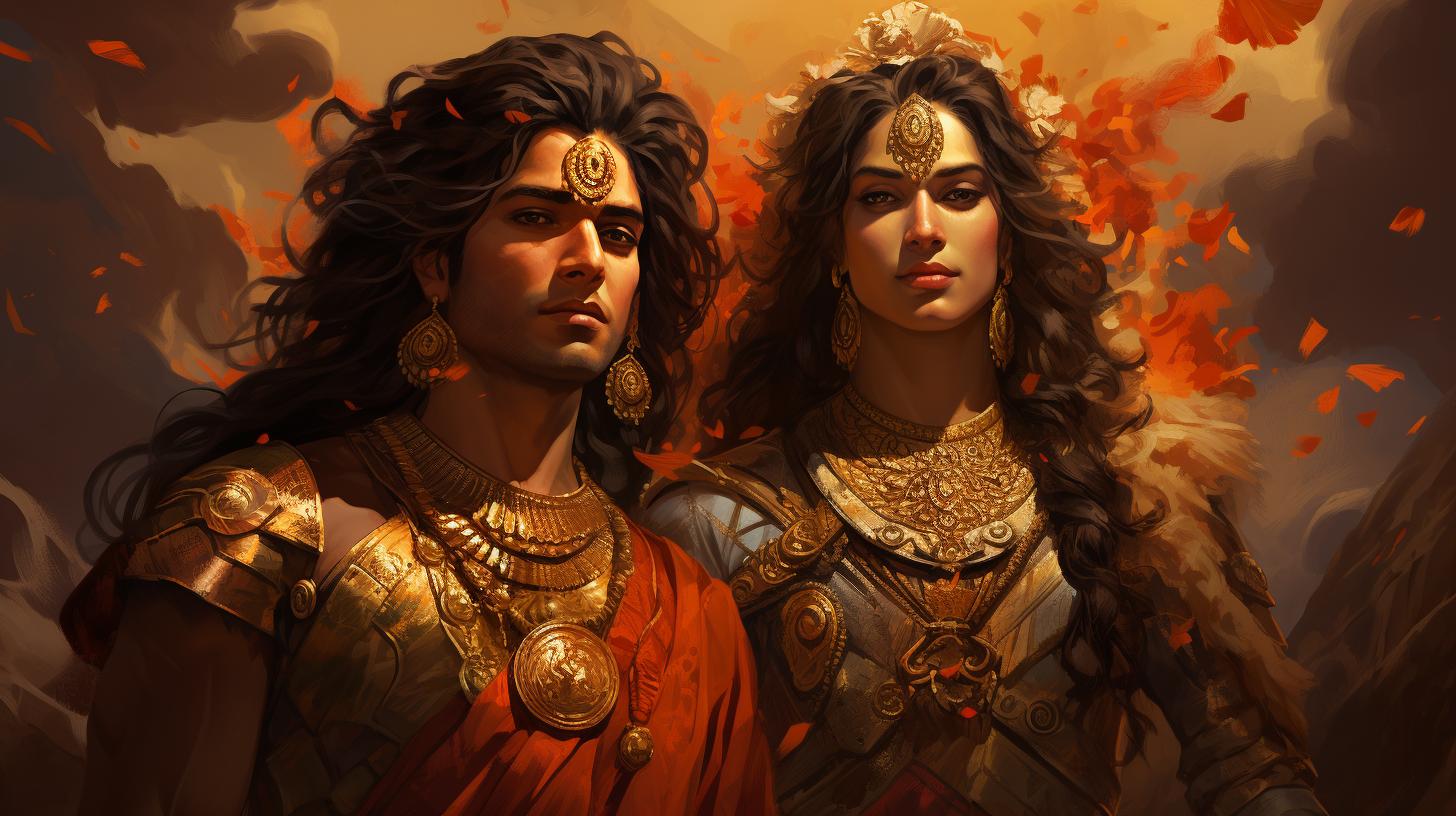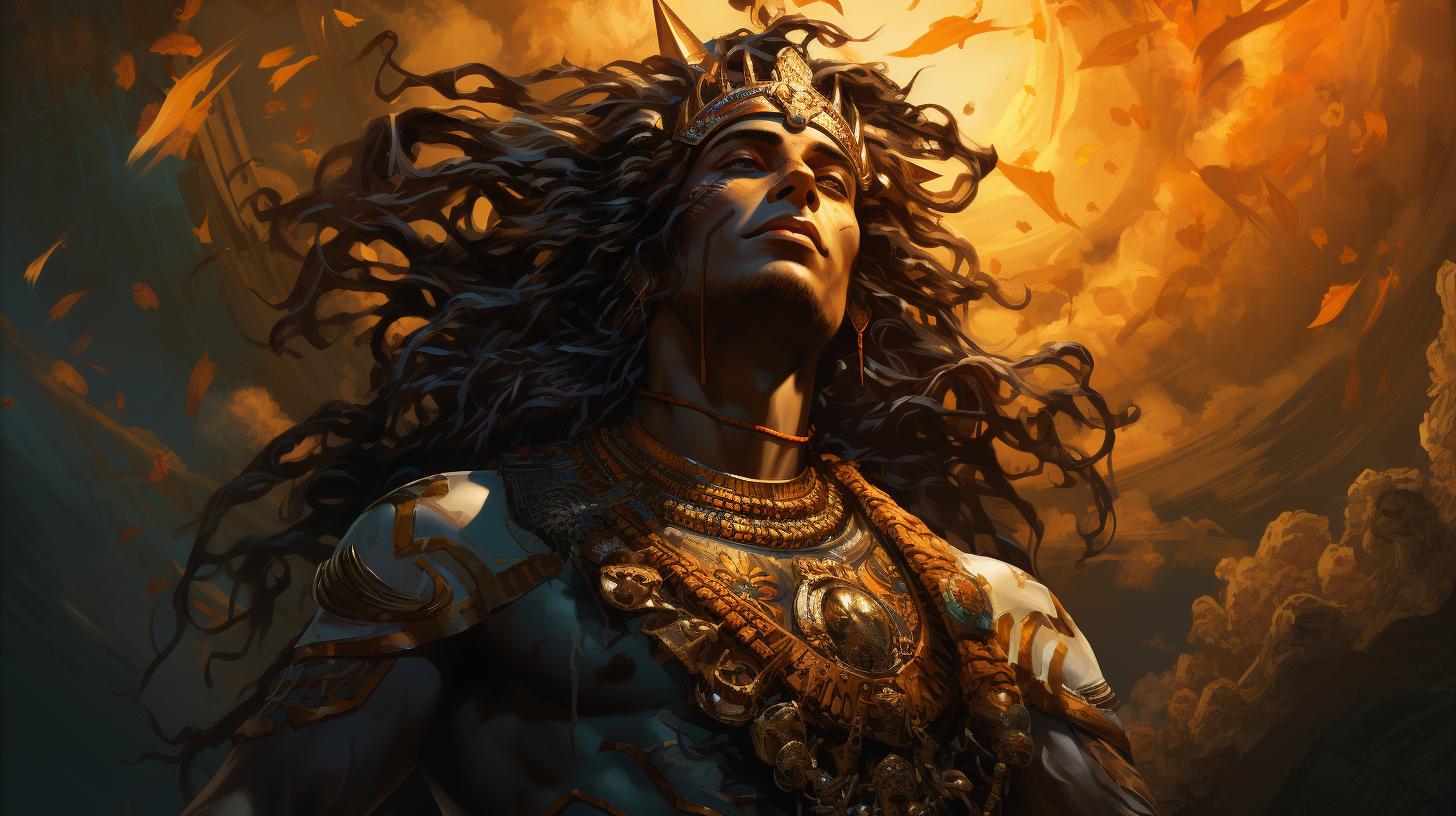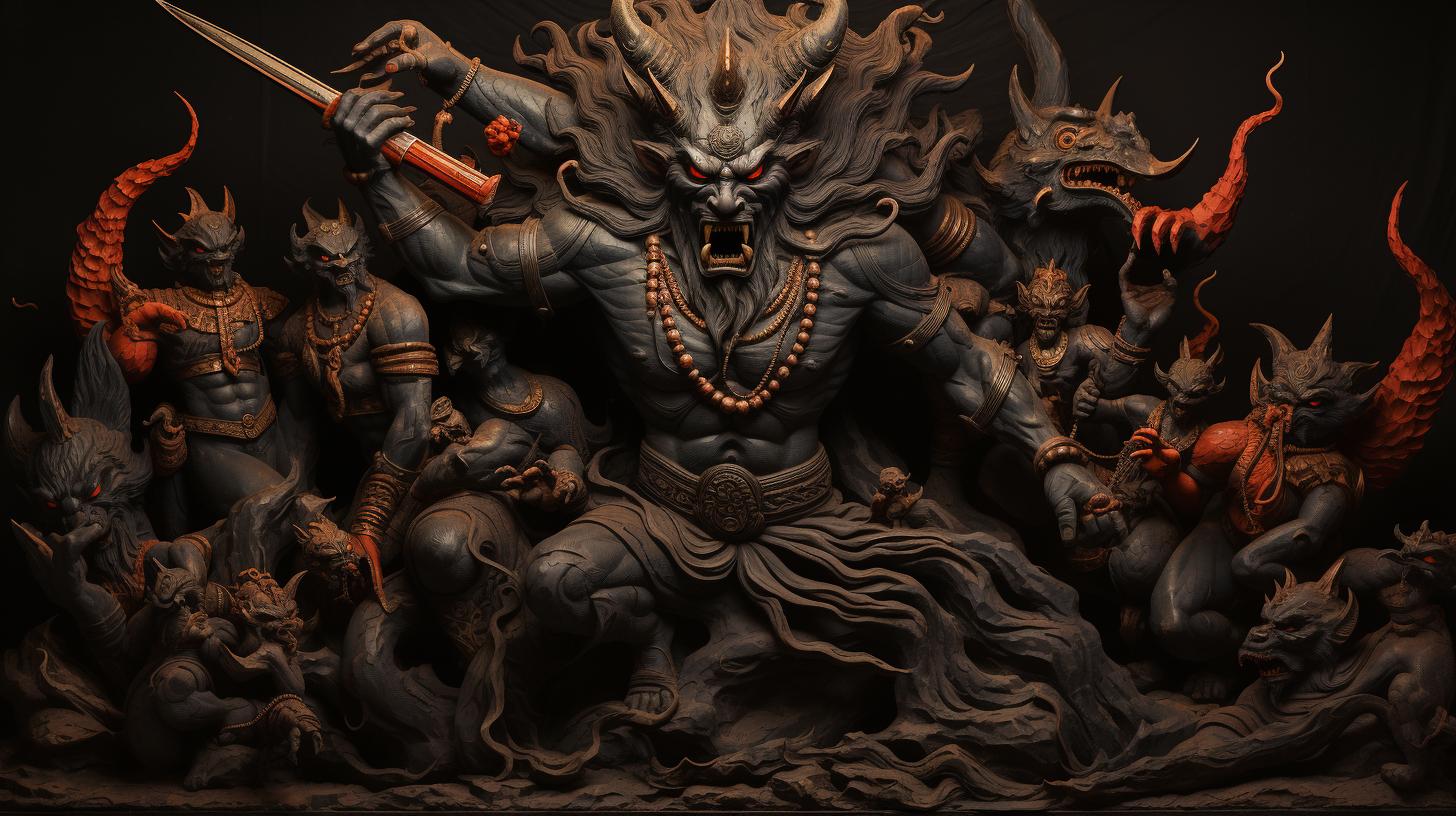Exploring the Divine Existence of Lord Balarama in Hindu Mythology

Lord Balarama, a revered deity in Hindu mythology, holds a significant place in the rich cultural heritage of India. As the elder brother of Krishna and an incarnation of Vishnu, Balarama embodies divine strength and wisdom.
This article delves into the origins and importance of Lord Balarama, exploring his close association with Krishna and their divine bond. The narratives surrounding his miraculous birth, pastoral childhood, martial arts expertise, and marriage to Princess Revati are discussed.
Additionally, the article examines Balarama’s presence in sacred texts, his iconography, and the archaeological evidence supporting his ancient existence.
Lord Balarama: An Introduction to the Divine Hindu Deity
Lord Balarama, a divine Hindu deity, holds immense significance in Hindu mythology and is revered as an embodiment of strength and wisdom. This section explores the origins and the profound significance attached to Lord Balarama, shedding light on his role and position in the Hindu pantheon.
Origins and Significance of Lord Balarama
Lord Balarama has his origins deeply rooted in Hindu mythology, where he is considered the elder brother of Krishna and an incarnation of the revered deity, Vishnu. Balarama’s significance lies in his association with agriculture and farming, symbolized by his affinity towards tools such as the plow and other farming implements.
He symbolizes the strength, sustenance, and harmony required for the survival of civilization.
Relationship with Krishna and Vishnu
Lord Balarama shares an inseparable bond with his younger brother, Krishna, who is also an incarnation of Vishnu. Balarama’s role is that of Krishna’s steadfast supporter and protector.
He complements Krishna’s playful and enchanting nature with his strength and wisdom, manifesting a divine balance between power and love. Balarama’s association with Vishnu further emphasizes his divine stature and the profound connection between the two deities.
This introductory section lays the foundation for understanding the significance of Lord Balarama in Hindu mythology, highlighting his origins, his relationship with Krishna, and his association with Vishnu. The subsequent sections delve deeper into the mythological narratives, Balarama’s presence in sacred texts, his iconography, and the archaeological evidence supporting his ancient existence, providing a comprehensive exploration of this revered deity.
The Mythological Narratives of Lord Balarama
Lord Balarama’s stories are filled with wonder and awe, showcasing the divine nature of this revered deity. Let us delve into some of the remarkable mythological narratives that surround him.
Miraculous Conception and Childhood as a Cowherd
One captivating aspect of Lord Balarama’s life is his miraculous conception.
This extraordinary event highlights his divine nature and his sacred purpose.
During his childhood, Lord Balarama enjoyed a pastoral life as a cowherd alongside his beloved brother Krishna. They would spend their days in the idyllic fields of Vrindavan, engaging in playful antics and herding cows with utmost love and care.
Their childhood adventures continue to captivate the hearts of devotees around the world.
Balarama’s Role as a Martial Arts Instructor
Balarama, known for his immense physical strength and martial prowess, played a crucial role as a martial arts instructor to not only Krishna but also prominent figures such as Duryodhana and Bhima.
His expertise in combat and strategic warfare was invaluable during the epic battle of Kurukshetra, chronicled in the Mahabharata.
With his mastery of various weapons and combat techniques, Lord Balarama taught the art of warfare to his students, emphasizing the importance of discipline, self-control, and righteous conduct on the battlefield.
His teachings continue to inspire individuals seeking guidance in the face of challenges and conflicts.
Marriage with Princess Revati
Lord Balarama’s sacred union with Princess Revati further exemplifies his exalted status. Revati, hailing from a noble lineage, was deeply devoted to Balarama and regarded him as her ultimate protector. Their marriage symbolized divine connection and eternal love.
Revati stood as the epitome of grace and virtue, and her union with Lord Balarama showcased the harmonious coming together of two extraordinary souls. The divine couple’s love and commitment continue to inspire devotees in their own pursuit of sacred relationships and devotion.
These mythological narratives surrounding Lord Balarama provide us with glimpses into his divine existence and the profound impact he has had on Hindu mythology and culture.
Lord Balarama in Sacred Hindu Texts
Lord Balarama occupies a prominent role in various sacred Hindu texts, further establishing his significance as a divine deity.
His presence is notably depicted in renowned scriptures such as the Mahabharata, the Harivamsha, and the Bhagavata Purana. These texts unfold captivating narratives illustrating his divine attributes, teachings, and his inseparable connection with Krishna, the supreme deity.
Balarama’s Presence in the Mahabharata
The Mahabharata, one of the two great Indian epics, serves as an extensive repository of ancient wisdom and legends. Within its vast verses, Lord Balarama’s compelling presence can be found, showcasing his significant role in shaping the saga of the Kuru dynasty.
Depictions in the Harivamsha and Bhagavata Purana
The Harivamsha and the Bhagavata Purana, both revered texts in Hinduism, present detailed accounts of Lord Balarama’s divine persona and exploits. The Harivamsha sheds light on his extraordinary birth, his cowherd adventures alongside Krishna, and his valiant feats.
Furthermore, the Bhagavata Purana delves into his divine lineage, portraying him as the eighth avatar of Lord Vishnu and highlighting the spiritual wisdom he embodies.
Spiritual Lessons and Teachings from Lord Balarama
Lord Balarama’s character in sacred Hindu texts imparts profound spiritual lessons and teachings. His unwavering devotion to duty, unwavering loyalty to Krishna, and profound sense of righteousness serve as inspirations for followers seeking spiritual enlightenment.
Lord Balarama’s teachings emphasize the importance of cultivating inner strength, maintaining moral integrity, and nurturing virtuous qualities in one’s journey towards self-realization and transcendence.
Through these sacred texts, Lord Balarama’s divine presence resonates, offering a valuable source of spiritual guidance to those seeking wisdom and enlightenment in their lives.
The Iconography and Symbolism of Lord Balarama
Lord Balarama, the divine Hindu deity, is depicted in various forms of art and sculpture, each carrying its own symbolic significance.
These artistic representations play a crucial role in understanding and connecting with the essence of Balarama’s divine energy and teachings.
Depictions in Art and Sculpture
Artistic portrayals of Lord Balarama often depict him with a serene expression, exuding a sense of tranquility. He is commonly shown with a fair complexion, muscular build, and adorned with divine ornaments.
In these artistic representations, Balarama is typically depicted standing upright, carrying various weapons and symbols that hold deep symbolic meaning.
One prominent depiction of Balarama includes his association with tools of agriculture, particularly an arado, or plow.
This symbolizes his role as the cultivator and sustainer of life. The plow signifies his dedication to nurturing the Earth and promoting abundance, reflecting the importance of agriculture in ancient Indian society.
Additionally, Lord Balarama is often depicted holding a mace, known as the gada. The gada symbolizes strength, power, and protection. It represents Balarama’s ability to overcome obstacles and protect his devotees from evil forces.
Symbolic Representation of Tools and Weapons
The presence of agricultural tools and weapons in Balarama’s iconography emphasizes his multifaceted nature. The plow, as mentioned earlier, signifies his connection to agriculture, growth, and prosperity. It serves as a reminder of the importance of sustainable livelihoods and the harmony between humans and nature.
The mace, on the other hand, represents Balarama’s role as a warrior. It symbolizes his ability to defend righteousness, vanquish negativity, and restore balance in the world. It showcases his unwavering courage, determination, and commitment to upholding cosmic order.
Worship and Devotion to Lord Balarama in Hinduism
Lord Balarama holds a significant place in Hinduism, and his worship is deeply rooted in devotion and spirituality. Devotees express their reverence towards Balarama through various rituals, offerings, and prayers in temples dedicated to him.
During religious festivals such as Balarama Jayanti, devotees gather to celebrate his divine presence and seek his blessings. They engage in devotional practices, recite sacred texts, sing hymns, and participate in processions to honor Balarama’s divine qualities and teachings.
Through worship and devotion, followers of Balarama aspire to cultivate virtues such as strength, kindness, and selflessness, aligning themselves with his divine essence. By immersing themselves in his spiritual energy, devotees seek guidance and inspiration for leading a righteous and meaningful life.
- In summary:
- Artistic representations of Lord Balarama showcase his divine attributes.
- Depictions often include symbols such as the plow and the mace.
- The plow symbolizes his association with agriculture and abundance.
- The mace represents his role as a protector and defender of righteousness.
- Worship of Lord Balarama is characterized by devotion and spiritual practices.
- Devotees seek his blessings and strive to embody his noble qualities.
Archaeological and Historical Significance of Lord Balarama
Archaeological and Historical Significance
The archaeological discoveries related to Lord Balarama offer valuable insights into his historical significance.
Among them, the ancient city of Dwaraka plays a crucial role. According to ancient scriptures, Dwaraka was the capital city ruled by Lord Krishna, and Balarama was an integral part of its grandeur.
Excavations and underwater explorations carried out in the present-day Indian state of Gujarat have revealed remnants of a submerged city believed to be Dwaraka, validating the existence of both Krishna and Balarama.
Discoveries and Evidences in Ancient Dwaraka
Dwaraka, situated along the western coast of India, has yielded remarkable archaeological evidence supporting the historical authenticity of Balarama. The remains include ancient structures, pottery, sculptures, and artifacts that provide glimpses into the vibrant civilization of the time.
These findings corroborate the accounts described in the sacred texts and validate the narratives surrounding Lord Balarama and his connection to Dwaraka.
Numismatic Evidence of Balarama in Greek Inscriptions
Further contributing to the archaeological significance of Lord Balarama are the numismatic findings. Ancient coins with inscriptions in Greek have been discovered, bearing the image of Balarama and other significant symbols associated with him.
These numismatic pieces solidify the historical context and trade connections during that era, providing tangible evidence of Balarama’s influence and presence in ancient India.
To comprehend the true archaeological and historical significance of Lord Balarama, researchers and experts continue to delve into the ancient ruins, artifacts, and scriptures that unravel invaluable details about his existence and the mythical era he represents.
Balarama’s Role in Hindu Traditions and Contemporary India
Festivals and Celebrations Associated with Lord Balarama
Lord Balarama is honored and celebrated throughout India with vibrant festivals and joyous celebrations. One such festival is the ‘Balarama Jayanti’, which marks his divine birth anniversary. Devotees gather in temples, offering prayers, performing rituals, and chanting hymns to pay tribute to this revered deity.
The festivities are accompanied by music, dance, processions, and elaborate decorations, creating a festive atmosphere that brings communities together in devotion.
Influence on Agriculture and Farming Practices
Balarama’s association with agriculture is deeply rooted in Hindu traditions. He is often depicted with agricultural tools such as plows, symbolizing his role in nurturing the land and supporting the livelihood of farmers.
His blessings are sought for bountiful harvests, fertility of the soil, and overall agricultural prosperity. In rural areas, rituals and ceremonies are performed to invoke Balarama’s blessings and ensure agricultural success.
His significance in farming practices showcases the importance of agriculture in Indian culture.
Cultural Impact and Relevance in India Today
Even in contemporary India, the influence of Lord Balarama can be seen in various aspects of culture, art, and spirituality. His stories, teachings, and iconography continue to inspire and guide individuals on their spiritual journeys.
Balarama’s devotion is a significant part of Hindu religious practices, and his temples are centers of spiritual and cultural activities. Additionally, his depiction in art, sculptures, and literature reflects the rich heritage and artistic traditions of India, ensuring that his legacy endures through generations.
- Balarama Jayanti: A celebration of Lord Balarama’s birth anniversary
- Agricultural rituals: Seeking Balarama’s blessings for prosperous harvests
- Cultural preservation: Promoting Balarama’s traditions in art, music, and literature
- Spiritual significance: Balarama’s teachings guiding individuals on their spiritual paths
In conclusion, Lord Balarama’s role in Hindu traditions and contemporary India is multifaceted.
His festivals bring communities together, his association with agriculture highlights its importance, and his cultural impact ensures his legacy lives on. Devotees continue to honor and seek his divine blessings, making Balarama a revered figure in Indian society.
Exploring Balarama and Krishna’s Divine Bond
The divine bond between Lord Balarama and Krishna holds immense significance in Hindu mythology. As eternal companions, they share a profound connection that transcends time and worldly limitations. Let’s delve into the depths of their celestial relationship and uncover the lessons it imparts.
Balarama and Krishna as the Eternal Divine Companions
Balarama and Krishna, as inseparable siblings and avataras of Lord Vishnu, epitomize the essence of divine companionship. Throughout their lives, they stand by each other, supporting, guiding, and protecting one another in various endeavors.
The bond they share goes beyond familial ties, symbolizing the eternal friendship and unity of souls.
Displaying their unique roles, Balarama assumes the responsibility of being Krishna’s steadfast friend, confidante, and ally.
Together, they embark on countless adventures, facing challenges and triumphs side by side. Their divine bond is a testament to the power of unwavering devotion, mutual love, and unbreakable companionship.
Lessons from their Divine Relationship
The relationship between Balarama and Krishna imparts invaluable lessons for individuals seeking spiritual growth and deep connections in their own lives:
Unconditional Love and Support:
- Witnessing the bond between Balarama and Krishna teaches us the essence of unconditional love and unwavering support.
They accept each other wholeheartedly, embracing their strengths and weaknesses, without judgment or expectations.
Loyalty and Trust:
- The divine companionship of Balarama and Krishna exemplifies loyalty and trust. They stand by each other in times of joy and adversity, demonstrating the importance of trustworthiness and loyalty in sustaining any relationship.
Mutual Growth and Enlightenment:
- Balarama and Krishna’s bond is characterized by mutual growth and enlightenment.
They inspire each other to evolve spiritually, bestow wisdom, and broaden their perspectives, fostering personal and collective growth.
Shared Purpose and Divine Service:
- United in their common purpose of upholding righteousness and fulfilling their divine mission, Balarama and Krishna exemplify the concept of divine service. Their harmonious partnership emphasizes the significance of aligning oneself with a higher purpose for the betterment of humanity.
In conclusion, the divine bond between Balarama and Krishna represents the epitome of friendship, love, and spiritual synergy.
Their eternal companionship serves as a guiding light for individuals seeking profound connections, teaching valuable lessons of unconditional love, loyalty, mutual growth, and shared purpose. It is through their divine relationship that we find inspiration to nurture and cherish our own connections, forging deeper bonds of love and understanding.
Notes on Lord Balarama: Common Questions and Misconceptions
Common Questions about Balarama and Krishna’s Relationship
As the divine companions in Hindu mythology, Lord Balarama and Lord Krishna share a special bond that has intrigued many. Here, we address some of the common questions that often arise about their relationship:
- Are Balarama and Krishna biological brothers?
- What is the significance of Balarama’s role as Krishna’s instructor?
- Did Balarama have any special powers or abilities?
- Can Balarama be considered an incarnation of Vishnu?
While Balarama is considered the elder brother of Krishna, their relationship is not based on biological kinship.
They are said to be inseparable and connected at a deeper spiritual level.
Balarama’s role as Krishna’s martial arts instructor symbolizes the transmission of divine knowledge and wisdom.
It emphasizes the importance of discipline, valor, and righteous living.
Yes, Balarama possessed extraordinary strength and prowess. Known for his immense physical power, he wielded a powerful plow as his weapon and demonstrated exceptional combat skills.
Absolutely, Balarama is regarded as an avatar (incarnation) of Lord Vishnu. His presence alongside Krishna signifies their joint mission to restore balance and righteousness in the world.
Addressing Misconceptions about Lord Balarama
There are several misconceptions surrounding Lord Balarama. Let’s explore and clarify some of these misconceptions:
- Is Balarama simply an agricultural deity?
- Does Balarama play a lesser role compared to Krishna?
- Is Balarama worshipped less frequently than Krishna?
- Is Balarama’s story less known compared to Krishna’s?
While Balarama is associated with agricultural tools like the plow, it’s important to note that he represents much more than just farming.
He embodies strength, protection, and spiritual enlightenment.
No, Balarama’s role is equally significant and complementary to Krishna’s. Each deity has their unique divine attributes, and together they embody the harmony of dualistic forces in the universe.
While Krishna enjoys widespread popularity and devotion, Balarama holds a significant place in Hindu worship as well. His devotees recognize and honor his divine grace and seek his blessings for various aspects of life.
While Krishna’s narrative is more widely known, Balarama’s story is equally captivating and filled with profound teachings. Exploring Balarama’s life reveals profound wisdom and elucidates essential aspects of dharma and spirituality.
..











